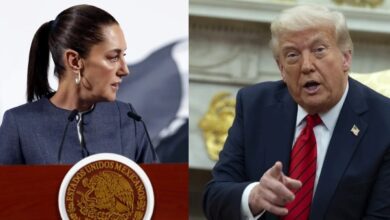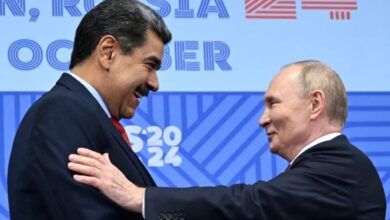How Chinese Companies Utilize Mexico to Access the U.S. Market

Mexico, with its unique geographical and economic position, is emerging as a critical player in the nearshoring trend. It is leveraging this position to bridge the vast manufacturing gap between China and the U.S., thereby reshaping global trade dynamics.
A significant transformation is underway in Monterrey, Mexico’s bustling industrial parks. Man Wah Furniture, a Chinese-owned company, exemplifies a growing trend where foreign firms are increasingly relocating manufacturing closer to the U.S. market. Plush leather sofas and reclining armchairs marked “Made in Mexico” are prepared for shipment to major U.S. retailers like Costco and Walmart, illustrating a complex tri-national relationship that could redefine global manufacturing and trade.
This shift, known broadly as “nearshoring,” has been accelerated by the ongoing trade tensions between the U.S. and China, making Mexico an attractive alternative for companies aiming to avoid hefty tariffs and benefit from reduced shipping costs. The presence of Chinese capital in Mexico’s northern industrial zones is more than a mere relocation of manufacturing facilities; it is a strategic positioning within the heart of North America.
The Man Wah factory in Monterrey, operational since 2022, has quickly ramped up to meet demands and is planning to triple or even quadruple its output shortly. The general manager, Yu Ken Wei, highlights the strategic advantages of their Mexican location, “People here are very hardworking and fast learners. We’ve got good operators, and their productivity is high.” This sentiment is echoed across various sectors in Mexico, where labor efficiency and a robust work ethic are often highlighted.
Economic and logistical considerations drove the company’s decision to shop in Mexico. By manufacturing in Mexico, Chinese companies can label their goods as “Made in Mexico,” thus avoiding the tariffs imposed on Chinese-made products amidst the U.S.-China trade war. This strategic maneuver benefits Chinese manufacturers and bolsters the Mexican economy.
Boosting the Mexican Economy
Mexico’s role in this new manufacturing landscape is proving to be a significant boost for its economy. By June last year, Mexico’s total exports had risen 5.8% from a year earlier to $52.9 billion, signaling a promising uptick in its manufacturing and export sectors. The trend shows no sign of slowing down, with substantial investments being announced frequently, painting a hopeful picture for the future of nearshoring in the region.
The high demand for industrial space within these parks is a testament to the country’s growing importance. According to the Industrial Parks Association of Mexico, every plot scheduled for development by 2027 has already been sold, underscoring the intense interest and long-term commitment from foreign investors, particularly from China.
Yet, this burgeoning relationship comes with its set of geopolitical nuances. Mexico finds itself in a strategically important position, nestled between the ongoing rivalry of two superpowers: the United States and China. As Juan Carlos Baker Pineda, Mexico’s former vice-minister for external trade, notes, “The structural reasons that are bringing capital to Mexico are here to stay,” indicating that Mexico’s strategic importance is likely to increase as U.S.-China tensions persist.
However, there are concerns about the broader implications of this shift. Enrique Dussel of the Centre for China-Mexico Studies warns of potential complications, suggesting that Mexico’s welcoming stance towards Chinese investment might strain its relations with the U.S. This complex triangulation requires careful navigation to avoid becoming collateral damage in a more significant geopolitical conflict.
Cultural and Corporate Synergies
The cultural exchange and corporate synergies are palpable amid these strategic and economic shifts. Workers in Monterrey, from sewists to engineers, are not just participating in a manufacturing boom; they are at the forefront of significantly reshaping global trade patterns. The skills and craftsmanship of Mexican workers are often praised by employers like Man Wah, who sees these attributes as central to their success and expansion plans.
As global dynamics evolve, Mexico’s role as a critical hub in nearshoring is expected to expand. This trend presents opportunities and challenges for Mexico, requiring a balanced approach to foreign policy and economic strategy. The decisions made today will likely have lasting impacts on Mexico’s international relations and its position in the global economy.
Also read: Mexico’s Clean Energy Push Amid Nearshoring Boom
The nearshoring trend exemplified by companies like Man Wah Furniture is not just a shift in manufacturing locations but a reconfiguration of global economic alliances. As these changes unfold, Mexico stands at a pivotal crossroads, poised to leverage its strategic geographic and financial position to become a central player in the new international trade landscape.





